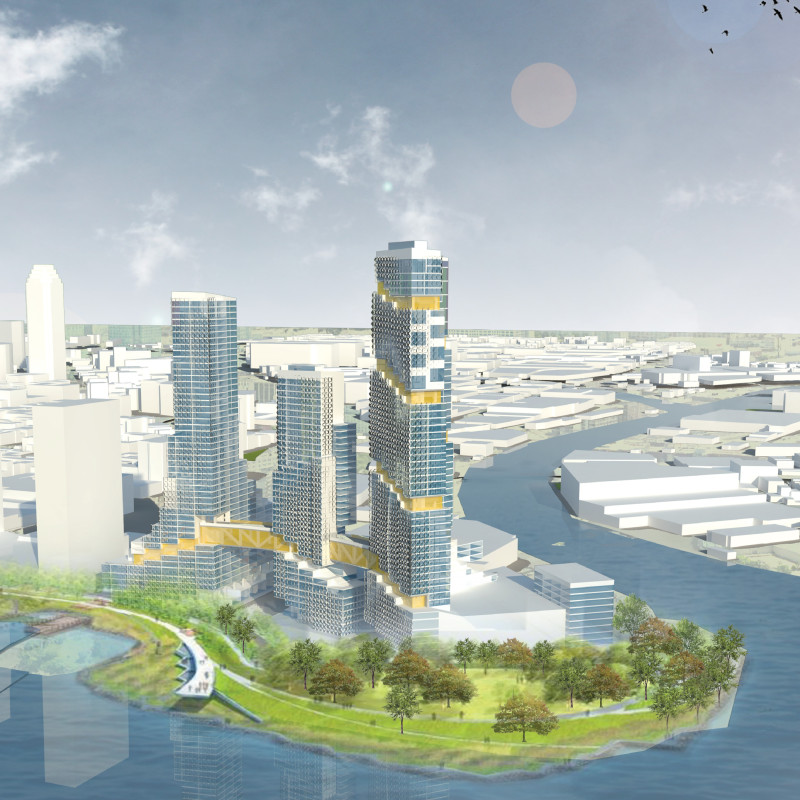5 key facts about this project
Ongoing Acclimation presents a thoughtful approach to high-rise living in New York City, where land is limited and density is high. The project introduces the concept of an "Air Bridge," enhancing vertical connectivity and encouraging a stronger bond between residents and their surroundings. This design allows for movement throughout the building and promotes social interaction, creating a lively atmosphere that integrates both public and private spaces.
Air Bridge Design
The design features a raised public park surrounded by diverse neighborhoods and compact living units. This park acts as a central hub, bringing the community together while offering crucial green space that benefits environmental quality. It improves residents' daily lives and serves as an open area for public use, fostering a sense of community and collaboration among inhabitants.
Magic Wall Feature
Another important aspect of this design is the "Magic Wall," which allows for flexible arrangements within the duplex units. This feature enables different unit types to combine easily, adapting to the changing needs of families while considering affordability in a variable housing market. The design encourages shared use of spaces, like kitchens, maximizing the functionality of each unit and enhancing interaction among residents.
Material Integration
The building uses "Active auxetics" for the facade. This material can respond to temperature changes, improving energy efficiency. It allows units to open for ventilation during warmer days and close during the colder months, which helps maintain a comfortable indoor climate. Placing this material on southern and western facades carefully limits excessive sunlight during the summer while allowing natural light in during winter, ensuring pleasant living conditions year-round.
Ongoing Acclimation carefully balances community needs with sustainable design. This focus on shared spaces within a high-rise structure creates a rich urban experience, contributing to the broader architectural context of New York City.


























